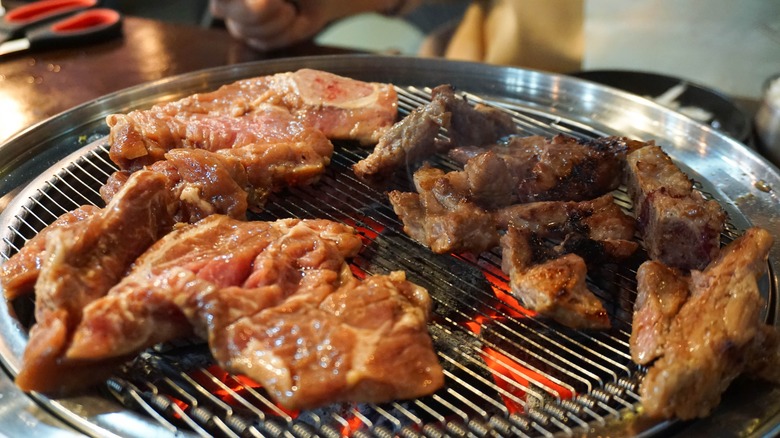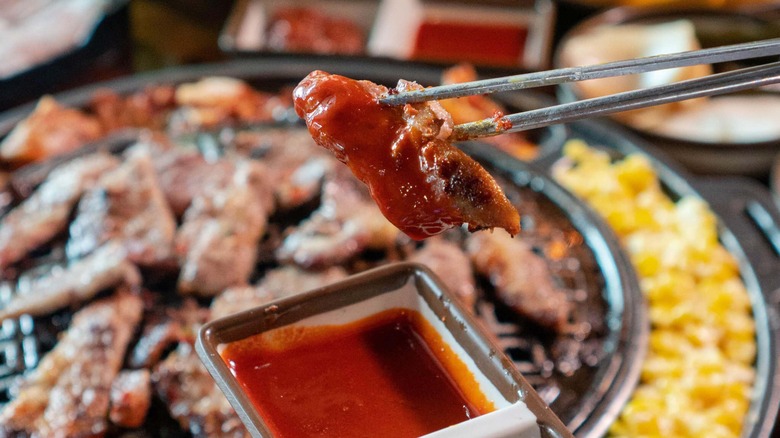The 2 Best Cuts Of Pork To Use For Tender And Flavorful Korean BBQ
We may receive a commission on purchases made from links.
In Korean cooking, pork belly is often the cut of choice for Korean barbecue. It has a perfect balance of fat and meat, which creates the juicy, char-grilled morsels that everyone loves for this style of barbecue. But pork belly may not always be available, so we consulted with Ji Hye Kim, chef and owner of Miss Kim in Ann Arbor, Michigan, about which are the best cuts of pork for Korean barbecue. "If you really want to use a sort of bone-in pork ribs for Korean barbecue, then you should go with the baby back ribs," Kim told us. She further explained that bone-in pork ribs are not braised in Korean barbecue, and without the benefit of a longer cooking time, they aren't especially tender.
Baby back ribs, however, are smaller than spare ribs and more tender than St. Louis-style ribs, so they're better suited for Korean barbecue. However, there's still a bit of work involved in prepping the ribs. All pork ribs have a thin membrane on the underside that gets tough when cooked and doesn't allow the marinade to soak into the meat, so the first step is peeling that off. Then, according to Kim, the ribs should be cut into smaller pieces and scored deeply with a knife "until you almost hit the bones so they are evenly marinated [and] cooked through during [the] shorter cooking time." Whole ribs could be slow-roasted, but, as Kim said, "then it would not be Korean barbecue."
Pork shoulder is ideal for Korean BBQ
Prepping baby back ribs for Korean barbecue is time-consuming, which is why Ji Hye Kim prefers another cut of pork over ribs. "You can avoid all this work by just using pork shoulder instead," she told Tasting Table. Pork shoulder is often confused with pork butt, even though there is a difference between the two. Pork butt has more fat and connective tissue and is best for pulled pork, stews, and sausages. Pork shoulder, meanwhile, is leaner and holds its shape better, and so Kim recommends "asking your butcher to slice them for you for about ½-inch thick," which allows for super fast and thorough cooking over the hot grill.
An essential component to Korean barbecue is the marinade, which does double duty as a tenderizer and flavor enhancer. The spicy Korean chili paste, gochujang, is usually a component, and garlic and ginger also add to the umami experience of the marinade. To balance out the spicy and salty flavors, sugar is often added, though it's more traditional to blend in round Asian pears (which differ from Bartlett pears), the enzymes of which break down and soften tough meat. But Korean barbecue isn't just about the meat; it's also a communal dining experience, and everyone takes part in grilling at the table. The grilled pork is often wrapped in lettuce leaves with condiments and eaten in one bite, which is why you should follow Kim's advice and select these two ideal cuts of pork for tender and flavorful Korean barbecue.

